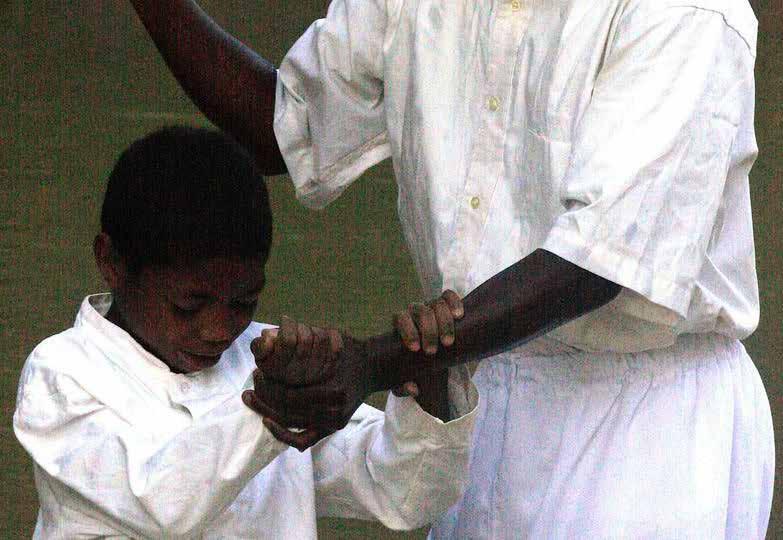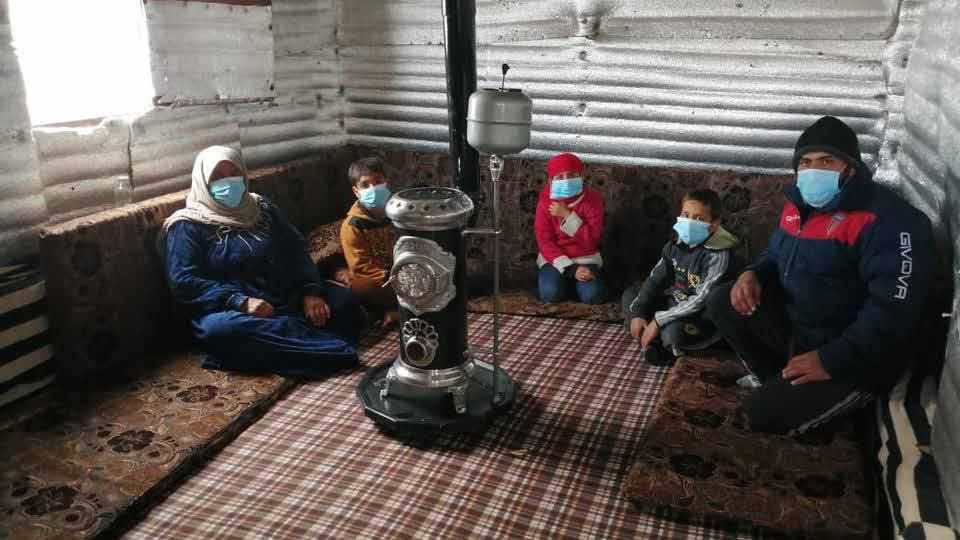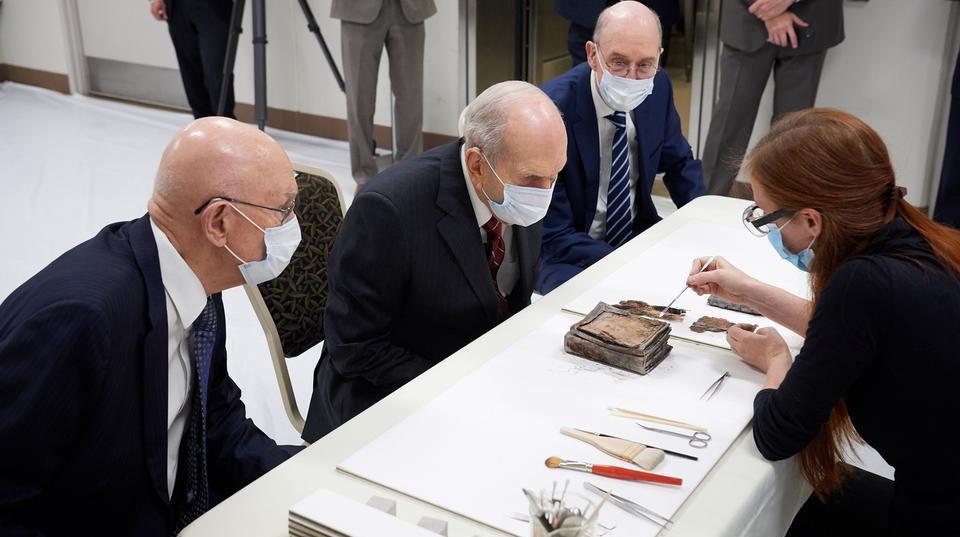
11 minute read
The LDS history of Blacks and the priesthood
BY GENELLE PUGMIRE
Daily Herald
Perhaps the most important moment for The Church of Jesus Christ of Latter-day Saints in the 20th cen tury was the revelation on the priesthood on June 8, 1978.
Under the leadership of President Spencer W. Kimball, joined by his counselors in the first presidency, President N. Eldon Tanner and President Marion G. Romney, a special meeting was held following months, and in some cases years, of church leaders studying scriptures, church doctrine and seeking the Lord to know if the time was now right to give Blacks the priesthood.
Those three men were joined in the upper room of the Salt Lake Temple by the Quorum of the Twelve Apostles that included: Ezra Taft Benson, Mark E. Peterson, Delbert L. Stapley, LeGrand Richards, Howard W. Hunter, Gordon B. Hinckley, Thomas S. Monson, Boyd K. Packer, Marvin J. Ashton, Bruce R. McConkie, L. Tom Perry and David B. Haight.
While Benson, Hunter, Hinckley and Monson went on to serve as presidents of the church, all those who were in the temple at the time of the revelation on the priesthood have since died. However, their influence and testimony on what happened that day, and leading up to it, will remain a turning point for the church.
Black history
The historical significance of Blacks in the church is a part of the greater story on the 1978 revelation. Numerous books and papers have been written on the subject.
There is no doubt among scholars that Edward Kimball’s book and papers on his father’s experience is perhaps the best and most personal collection available.
“When the Church was very young a few Black men were ordained to the priesthood. But soon such ordinations ceased, and a tradition grew, supported by common Christian beliefs and certain scriptural interpretations, that African Blacks bore the burden of a curse levied by God on Cain and his posterity, which precluded them from participating fully in the life of the Church,” Edward Kimball writes.
“After World War II, the civil rights movement grew powerfully, calling for
COURTESY INTELLECTUAL PROPERTIES A congregation in Madagascar holds worship services outdoors prior to baptizing new members into the Church, Aug. 31, 2020.
equal legal and social status for Blacks. The movement gained strength through the 1960s, resulting in strong criticism of the church for its exclusion of Blacks from the priesthood and the temple, motivating some church leaders to brace against attack and others to ask whether the time had come to seek a change,” Kimball added.
The Blacks-and-the-priesthood story most often begins with Joseph Smith and Elijah Abel. Other stories include Green Flake, Samuel D. Chambers and others. One of the most notable Black women in the church is Jane Manning James.
Members in the 21st century are just beginning to hear their stories, as before now they were rarely reported.
Long forgotten
“By the twentieth century, the origin of the restriction on Blacks having the priesthood had receded far enough into the past that it carried the sanctity of long-established tradition,” Edward Kimball said. “Most Mormons felt satisfied that it had a scriptural basis, even though the cited passages were at best ambiguous.”
Be inspired... then come see us!
Pre Season Sale on Lawn & Garden Equipment!
Customer Satisfaction #1 Goal! Over 40 Years Serving Northern Utah Sales Service & Parts DAY POWER EQUIPMENT COMMERCIAL & RESIDENTIAL MOWERS • TILLERS • RIDERS • TRIMMERS
5990 S. 1900 W. Roy 801 825-3125
Open Monday-Saturday Financing Available
Edward Kimball notes that his father Spencer knew that the restriction did not come from explicit scriptures but rather from interpretations by various church leaders.
“The reasoning, as often constructed, ran this way: If (as attributed to Joseph Smith and Brigham Young) God disap proved of Blacks holding the priesthood, and if (in God’s justice) individuals are accountable only for their own shortcomings, the withholding of priesthood from Blacks who have lived worthily in mortality must reflect some kind of failure on their part before they were born,” Edward Kimball said.
It was a common teaching in early days of the church, and reiterated in “Mormon Doctrine,” written by Bruce R. McConkie, that men of African or “Negro” descent would not receive the priesthood in this lifetime. From “Mormon Doctrine” it said, “Negroes in this life are denied the priesthood; under no circumstances can they hold this delegation of authority from the Almighty.”
On pages 476 and 477 of the 1958 first edition of “Mormon Doctrine,” it continued, “President Brigham Young and others have taught that in the future eternity, worthy and qualified Negroes will receive the priesthood and every gospel blessing available to any man.”
Just 20 years later, Spencer W. Kimball announced that all worthy male members could hold the priesthood. Members of the church voted on the matter in the October conference of 1978 and it became part of the church’s book of scriptures, the “Doctrine and Covenants,” known as Official Declaration 2.
In a recent commentary since becoming a member of the First Presidency, President Dallin H. Oaks said before he was a general authority, he questioned why those of African ancestry were denied the blessing of the priesthood.
Oaks said he determined, “to be loyal to our prophetic leaders and to pray — as promised from the beginning of these restrictions — that the day would come when all would enjoy the blessings of priesthood and temple. Now that day had come, and I wept for joy.
“The reasons that had been given to try to explain the prior restrictions on mem

A young boy is baptized in a river near his village, Aug. 31, 2020.
bers of African ancestry — even those previously voiced by revered Church leaders — were promptly and publicly disavowed,” Oaks added.
A timeline
Edward Kimball reports, ”The first known direct statement by a Church President that blacks were denied the priesthood came from Brigham Young in February 1849 when he said of ‘the Africans’: ‘The curse remained upon them because Cain cut off the lives of Abel. ... The Lord had cursed Cain’s seed with blackness and prohibited them the Priesthood.
“In 1852, Wilford Woodruff reported that Brigham Young, speaking to the Utah territorial legislature, took personal responsibility for articulating the restriction: ‘Any man having one drop of the seed of Cane [sic] in him cannot hold the priesthood and if no other prophet ever spake it before I will say it now in the name of Jesus Christ. I know it is true they know it’,” Kimball reported.
That is how the church remained for the most part until after World War II.
The 1940s
“In 1947, the First Presidency assigned Heber Meeks, president of the Southern States Mission, to explore the possibility of proselyting in Cuba. Meeks asked his knowledgeable LDS friend, sociologist Lowry Nelson of the University of Minnesota, about the mixed racial picture in Cuba and whether missionaries would be able to avoid conferring priesthood on men with some Negroid ancestry,” Edward Kimball said. “Nelson sent his reply to both Meeks and to the First Presidency, expressing sharp dismay at the policy. The Presidency responded, ‘From the days of the Prophet Joseph even until now, it has been the doctrine of the Church, never questioned by any of the Church leaders, that the Negroes are not entitled to the full blessings of the Gospel.’ Its explanation, they said, was to be found in the premortal existence.”
In 1952, Nelson, still unable to reconcile this church policy with his understanding
COURTESY INTELLECTUAL PROPERTIES
of the gospel, published an article critical of the policy in The Nation, drawing national attention, Edward Kimball said.
In 1949, President George Albert Smith’s administration began sending out a consistent statement in response to inquiries. It followed the pattern set in earlier private correspondence by the First Presidency and by David O. McKay, who had been a counselor in the First Presidency since 1934: “It is not a matter of the declaration of a policy but of direct commandment from the Lord, on which is founded the doctrine of the Church that Negroes ... are not to have the priesthood at the present,” Edward Kimball noted.
1950s
“When McKay became Church President in April 1951, he continued to respond to queries with this same statement. But behind the scenes, application of the policy was changing to some degree.
“In 1948, during the George Albert
Smith administration, priesthood leaders in the Philippines were authorized by the First Presidency to ordain Negrito men to the priesthood,” Edward Kimball said. “These were native men with black skin who had no known African ancestry. Descent from Black Africans only — not skin color or other racial characteristics — became the disqualifying factor.”
In 1954, McKay is said to have appointed a special committee of the Twelve to study the issue. They concluded that the priesthood ban had no clear basis in scripture but that church members were not prepared for change.
“In an administrative decision, President McKay discontinued the practice in South Africa of requiring converts to trace all lines of their ancestry out of Africa as a way of establishing they had no Negroid blood,” Edward Kimball said.
Kimball noted that most General Authorities tried to avoid public discussion of the topic.
1960s
“Hugh B. Brown, counselor to President McKay from 1961 to 1970, appears to have been the leader most open to change,” Edward Kimball said. “He urged that the priesthood restriction could be dropped as a matter of church administrative policy without requiring a specific revelation. He reasoned that if the restriction had not come by revelation, it could be vacated without revelation. But despite his strongly held views and powerful influence, President Brown’s position did not then prevail.”
In 1960, Glen G. Fisher, newly released president of the South African Mission, stopped in Nigeria to visit groups that were using the church’s name. He re ported to the First Presidency that their faith was genuine. He urged sending missionaries to baptize believers and to organize branches, according to Edward Kimball.
“LaMar Williams, who as secretary to the Church Missionary Committee answered letters that came from Africa, was sent to Nigeria in 1961. He was met at the airport by ten pastors he had been corresponding with and discovered that they were unaware of one another. Williams returned with the names of fifteen thousand unbaptized converts who were waiting for the Church to come to them,” according to Edward Kimball.
Kimball notes that in January 1966, the Biafran War broke out. For the next five years, civil strife kept Nigeria in turmoil. Even after the war ended, political instability continued until a peaceful military coup in July 1975.
While leaders in the church continued to discuss the race issue, the world was not standing still.
“Congress adopted the Civil Rights Act of 1964 and the Voting Rights Act of 1965. The march from Selma, Alabama, to the state capitol occurred in 1965, and that same year three hundred protesters paraded to the Church Office Building demanding that the Church endorse a civil rights bill then languishing in the Utah legislature,” according to Edward Kimball.
1970s
“The Church did not make a public statement, but the legislation passed,” Kimball said. “Between 1968 and 1970 at least a dozen demonstrations or violent acts occurred when BYU athletic teams played other schools. Opposing players refused to participate or wore black armbands. One spectator threw acid, and another threw a Molotov cocktail that failed to ignite. Stanford severed athletic relations with BYU.”
Many other things transpired on the issue of race during the 1970s, but there is no doubt feelings were changing not only within the membership of the church but in the highest levels of leadership.
“In the spring of 1978, shortly before the revelation announcement, F. Briton McConkie was in Manila by assignment giving patriarchal blessings,” Edward Kimball said. “To a woman of African descent, he promised she would receive the blessings of the temple. To Alonzo Harris, a black man, he promised that he would receive the priesthood and the blessings of the temple in his lifetime. Upon his return to Utah, Briton told his brother Elder Bruce R. McConkie about the unusual blessings, and Bruce responded noncommittally, “I am glad to know you have given those blessings.”
Kimball adds, in only a few days, these otherwise mystifying events would be seen as part of a foreshadowing.
Buy 1 Suit get 1 for $1 *


*On select styles OREM AMERICAN FORK Buy 1 Suit get 1 for $1 * University Place 62 N. 600 W. 575 E. Univ. Pkwy *On select styles 801-492-9400 801-224-4520 (next to Olive Garden)
OREM AMERICAN FORK
University Place 62 N. 600 W.
Buy 1 Suit get 1 for $1 * 575 E. Univ. Pkwy 801-224-4520 801-492-9400 (next to Olive Garden)
*On select styles





